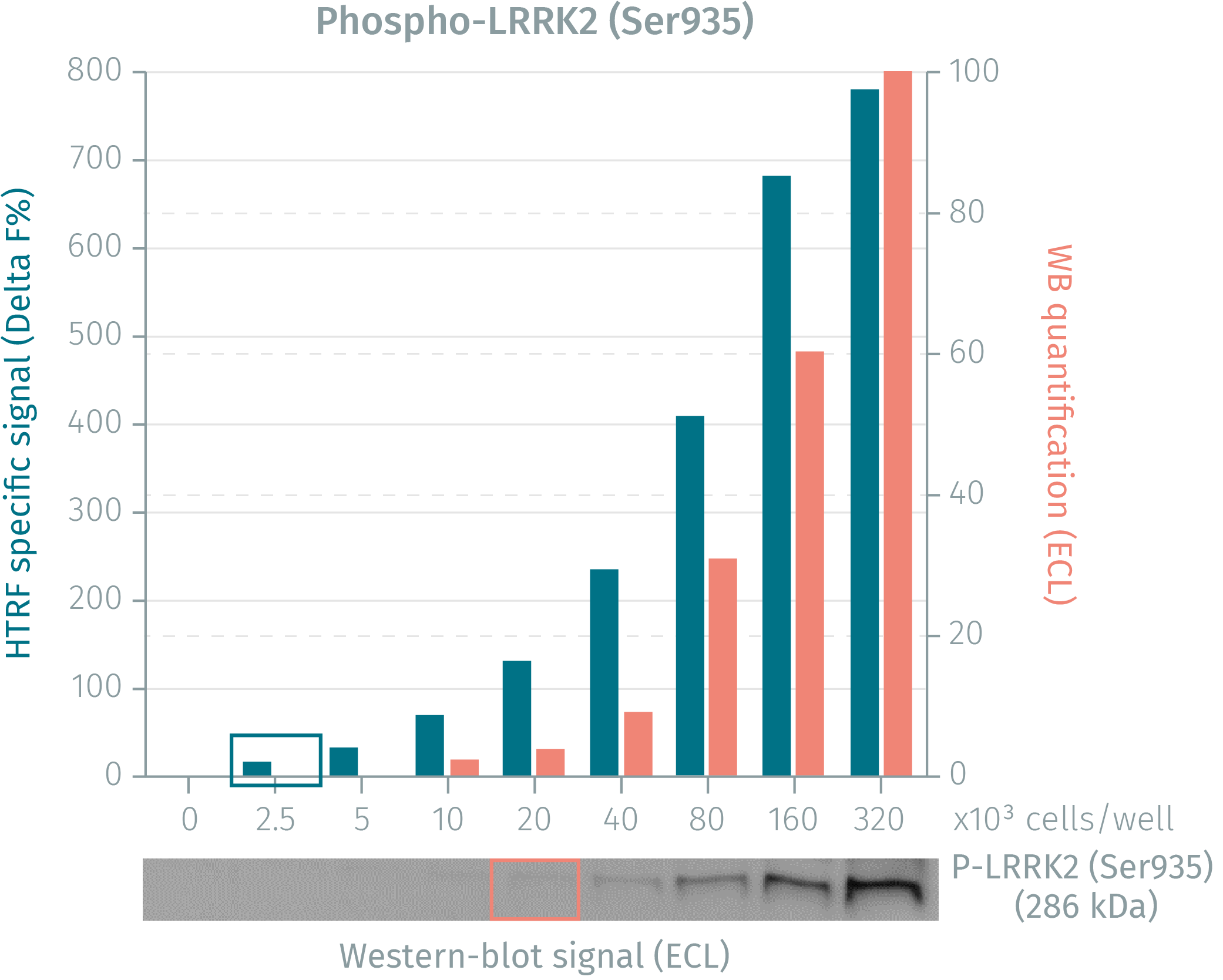

HTRF Human and Mouse Phospho-LRRK2 (Ser935) Detection Kit, 10,000 Assay Points






This HTRF kit enables the cell-based quantitative detection of LRRK2 protein phosphorylated at Serine 935 directly in your cell type of interest.
For research use only. Not for use in diagnostic procedures. All products to be used in accordance with applicable laws and regulations including without limitation, consumption & disposal requirements under European REACH regulations (EC 1907/2006).
Product information
Overview
The phospho-LRRK2 (Ser935) kit measures endogenous LRRK2 protein phosphorylated at Ser935 directly in your cell type of interest. LRRK2 is a significant target in neuroscience research involving Parkinsons disease (PD) and neurodegenerative disorders in general.
Specifications
| Assay Points |
10000
|
|---|---|
| Assay Target Type |
Kit
|
| Assay Technology |
HTRF
|
| Brand |
HTRF
|
| Quantity |
1
|
| Therapeutic Area |
Neuroscience
|
| Unit Size |
10,000 Assay Points
|
Video gallery


How it works
Phospho-LRRK2 (Ser935) assay principle
The phospho-LRRK2 (Ser935) assay measures LRRK2 when phosphorylated at Ser935. Contrary to Western Blot, the assay is entirely plate-based and does not require gels, electrophoresis or transfer. The phospho-LRRK2 (Ser935) assay uses 2 labeled antibodies: one with a donor fluorophore, the other one with an acceptor. The first antibody is selected for its specific binding to the phosphorylated motif on the protein, the second for its ability to recognize the protein independent of its phosphorylation state. Protein phosphorylation enables an immune-complex formation involving both labeled antibodies and which brings the donor fluorophore into close proximity to the acceptor, thereby generating a FRET signal. Its intensity is directly proportional to the concentration of phosphorylated protein present in the sample, and provides a means of assessing the proteins phosphorylation state under a no-wash assay format.

Phospho-LRRK2 (Ser935) 2-plate assay protocol
The 2 plate protocol involves culturing cells in a 96-well plate before lysis then transferring lysates to a 384-well low volume detection plate before adding phospho-LRRK2 (Ser935) HTRF detection reagents. This protocol enables the cells' viability and confluence to be monitored.

Phospho-LRRK2 (Ser935) 1-plate assay protocol
Detection of phosphorylated LRRK2 (Ser935) with HTRF reagents can be performed in a single plate used for culturing, stimulation and lysis. No washing steps are required. This HTS designed protocol enables miniaturization while maintaining robust HTRF quality.

Assay validation
HTRF phospho-LRRK2 assay compared to Western Blot
Murine NIH-3T3 cells were cultured for 2 days until reaching 100% confluency. Following cell lysis, soluble fractions were then collected after a 10 min centrifugation. Serial dilutions of the cell lysate were performed in the supplemented lysis buffer and 16 µL of each dilution were dispensed and analyzed side-by-side by WB and by HTRF. The HTRF phospho-assay is 8-fold more sensitive than the Western Blot: only 2,500 cells are sufficient for minimal signal detection when using the HTRF phospho- LRRK2 assay while 20,000 cells are needed for a Western Blot signal.

Phospho LRRK2 detection in NIH 3T3 cells
Cells were cultured in 6-well plates and treated with increasing concentrations of CZC and GSK for 2 hours. Medium was removed and replaced with Revvity lysis buffer for 1 hour. 16 µL of lysate were taken from each well and transferred to a 384-well plate for detection with HTRF reagents. The Revvity phosphorylated LRRK2 assay enabled clear determination of both inhibitors IC50s, in agreement with literature.

Resources
This guide provides you an overview of HTRF applications in several therapeutic areas.

SDS, COAs, Manuals and more
Are you looking for technical documents for this product. We have housed them in a dedicated section., click on the links below to explore.


How can we help you?
We are here to answer your questions.






























